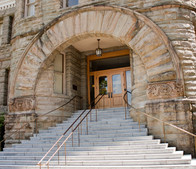|
|
As districts and schools continue to develop Academic and Well-Being Recovery Plans, the Office of Native Education and members of the Washington Native American Education Advisory Committee Social and Emotional Learning subcommittee gratefully acknowledge the commitment of our Native educators and Tribal leadership to our Native students and respectfully offer the following considerations to OSPI, ESD, and District leaders serving American Indian and Alaska Native learners and families.
Community Partnerships
- Develop plans through ongoing tribal consultation required by Every Student Succeeds Act (ESSA).
- Honor Memorandums of Agreement and Memorandums of Understanding between tribes and districts, strengthen existing agreements, and develop additional agreements when needed.
Student and Family Voice
- Engage Title VI Native Education and Johnson-O’Malley parent committees in meaningful collaboration.
- Seek advisement from Title VI Native Education leaders.
- Engage tribal community members who have strong connections and are trusted by tribal students, families, communities, and organizations led by the tribes in meaningful and ongoing collaboration.
Student Well-Being
- Ensure school counselors are focused on addressing relational, social, emotional, and well-being of students and not only academics.
- Integrate Native-centered SEL approaches into all lessons across all content areas and for all grade levels.
- Prioritize hiring of Native educators, counselors, and mental health providers to serve American Indian and Alaska Native children, youth, and families.
- Recognize that practices serving the needs of Native learners also meet the needs of all learners.
Professional Development
- Raise awareness and understanding of educators about the continued impacts of intergenerational trauma and violence and the resiliency of tribal peoples.
- Acknowledge intentional and unintentional bias.
- Implement cultural competency with a holistic approach.
- Fully implement, in collaboration with the tribe(s) nearest your district, the Since Time Immemorial and tribally-developed curriculum with fidelity and integrity, including professional learning and supplemental classroom resources. Since Time Immemorial: Tribal Sovereignty in Washington State | OSPI (k12.wa.us)
Recovery and Acceleration
- Fully implement, in collaboration with the tribe(s) nearest your district, the Since Time Immemorial and tribally-developed curriculum with fidelity and integrity, including professional learning and supplemental classroom resources. Since Time Immemorial: Tribal Sovereignty in Washington State | OSPI (www.k12.wa.us)
- Use data that includes maximum identification of American Indian and Alaska Native learners (AI/AN Non-Hispanic, AI/AN Hispanic, AI/AN Two or More races) for planning, analysis, and decision making. The Education Committee of the Affiliated Tribes of Northwest Indians has collaborated with Education Northwest to develop a case study and infographic. OBSCURED IDENTITIES: Improving the Accuracy of Identification of American Indian and Alaska Native Students ; Native Youth Count: A resource guide for families of American Indian and Alaska Native students
- Enhance resources and supports to implement prioritized Title VI Native Education and Johnson-O’Malley program goals.
- Expand resources, opportunities, and coordination of district programs and services supporting American Indian and Alaska Native learners (i.e., Title III English Language Learning, Migrant Education, Career and Technical Education, Special Education, etc.).
- Expand anti-racist, culturally based learning opportunities that center tribal curricula, instructional resources, and approaches; including Mastery-Based Learning pathways for the purposes of graduation.
- Enhance opportunities for American Indian and Alaska Native learners to engage in tribal language learning and growth.
- Identify and name “Lessons Learned” from the Academic and Well-Being Recovery Plan related to experiences of American Indian and Alaska Native learners for planning and evaluation of identified goals.
Diagnostic Assessments
- Seek to engage in assessment processes that identify the assets and strengths of Native children, youth, and families with a collectivist approach.
- Recognize intentional and unintentional bias and deficit narratives in diagnostic assessments.
- Connect system indicators with student performance indicators (including policy, funding, paraeducator, teacher, and administrator experience working with Native students, families, and communities, etc.).
Other Considerations
- Ensure district plans align and are responsive to findings cited in the Affiliated Tribes of Northwest Indians, who are members of 57 Tribes of the northwest, Resolution 2020-44: “Urge A Transformation Plan of Action Plan to Address the Pre K–20 Education Crisis Confronting Native Students,” passed October 5–8, 2020, and Governor’s Emergency Proclamation 21-05: “Children and Youth Mental Health Crisis” issued on March 15, 2021.
If you have any questions or need additional guidance, please contact Jon Claymore, Executive Director, Office of Native Education at jon.claymore@k12.wa.us.
|
|
|
ALL STUDENTS PREPARED FOR POST-SECONDARY PATHWAYS, CAREERS, AND CIVIC ENGAGEMENT.
Led by State Superintendent Chris Reykdal, OSPI oversees K-12 public education in Washington state. Our mission is to provide funding, resources, tools, data and technical assistance that enable educators to ensure students succeed in our public schools, are prepared to access post-secondary training and education, and are equipped to thrive in their careers and lives.
|
|
 |
|
|
|
|
|


